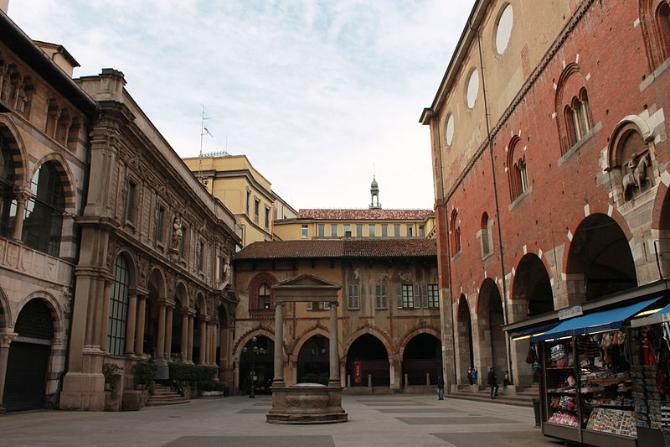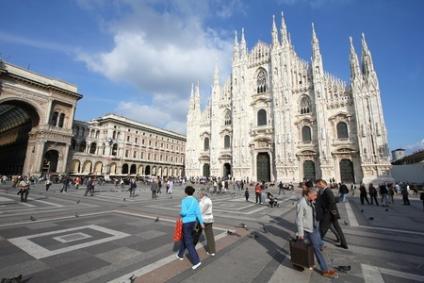This public square is not far from the Duomo and at one time was the center of Milan's commercial and governmental life. During the Middle Ages the square was surrounded by important civil buildings like the city hall, law courts and a prison. This was where a crier would announce weddings and where the city market was held. Today the hustle and bustle has moved to Cathedral Square while Mercanti Square has retained its historic architecture.
The Palazzo della Ragione or Palace of Justice was built as the courthouse in 1228 in the center of the square. On the façade is an equestrian relief of Milan's mayor at the time Oldrado da Tresseno who had commissioned the building's construction. The statue may have been created by Benedetto Antelami. The city market was held beneath the building's elegant open arcade facing the square. On the wall of the Palazzo della Ragione is the scrofa semilanuta, a relief image of a fur covered wild boar (half-woolly sow) which is a legendary symbol of Milan.
In 1316 Matteo Visconti commissioned the construction of the Loggia degli Osii, to house court officials and offices. Statues of Milan's patron saints adorn the upper level of the building's façade. The Baroque palace, Palazzo delle Scuole Palatine (Palace of the Schools of the Palatine), stands adjacent to the Loggia degli Osii, and was constructed in 1645, it boasts sculptures of Saint Augustine and the Roman poet Ausonius. Next to the palace is the Casa dei Panigarola, a Gothic style building with pointed arches and terra cotta decoration.
On the north side of the square is Palazzo dei Giureconsulti, which now houses the Chamber of Commerce.
The square is the site of the "stone of failed" where disgraced dealers would be made to sit and be ridiculed as punishment before being taken to prison.












